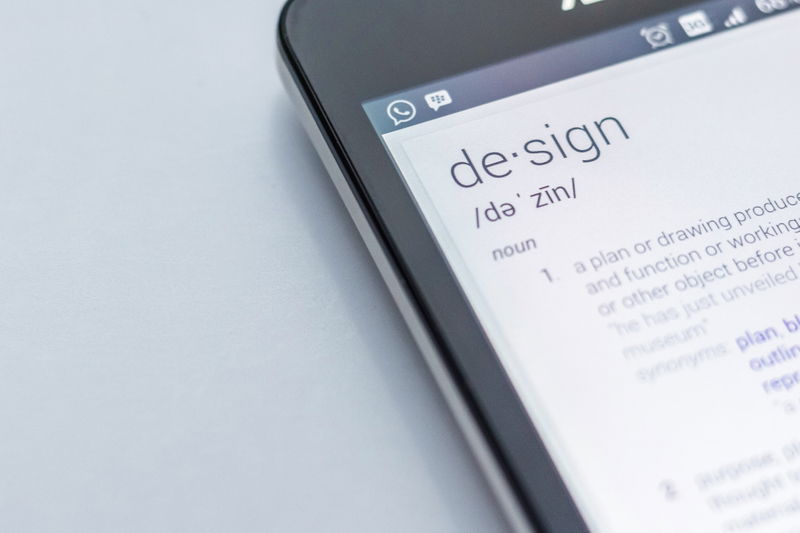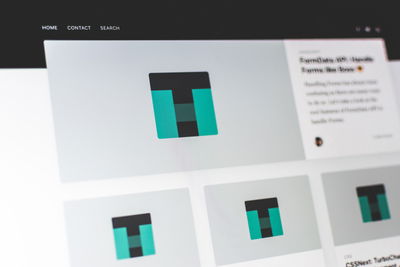7 Tips for Creating an Accessible Website Design
Creating an accessible website that is usable for all people, regardless of disabilities, can often be a daunting task. However, by following a few simple tips and best practices, achieving an accessible website design is easier than it first appears. Here are the top 7 tips for designing an accessible website.Innehåll:

Include Alt Text For Images
Including alt text for images is an important factor in making sure your website is accessible. Alt text is the text that appears in place of an image if it is unable to be displayed. It should be descriptive and explain what the image is portraying.When adding images, include the alt text in the HTML which will ensure the image can be properly accessed by everyone, including those using screen readers. Alt text should be as short and concise as possible as this makes it easier for someone using a screen reader to understand. Be sure to use factual, descriptive words to accurately describe the image so that your website remains compliant with accessibility standards.
Behöver du en hemsida? Vill du bygga en hemsida men vet inte var du ska börja? Vår webbplatsbyggare är den perfekta lösningen. Lätt att använda och med möjligheten att anpassa för att passa dina affärsbehov kan du få en professionell webbplats på nolltid.
Make Use of Headings & Labels
Headings and labels are important elements to consider when creating an accessible website design. Headings provide structure to a page and allow users to quickly establish the main topics and sections of content. Labels allow users to further understand what the input fields, options, and buttons do.It's important to make sure each section of content is correctly labeled and identified. The headings should accurately describe the type of content that come after it. Put simply, headings let customers know where they are and labels let them know what to do.
When creating headings and labels, use straightforward text that is easy to comprehend. Use standard, accepted wording for links and other interactive elements. In addition, create headings and labels that are consistent across the website. This will help users navigate your website in a more organized and efficient manner.
Provide Easy Keyboard Navigation
Keyboard navigation is a core part of creating an accessible website design. By providing an easy to use keyboard navigation system, users can quickly and efficienty use a website with minimal physical effort.It is important to consider the keyboard navigation options for users with disabilities. Common navigation patterns consist of pressing "Tab" to go forwards and pressing "Shift + Tab" to go backwards. Designing a site to have adequate focus states and using HTML's tabindex attribute can help ensure that users have the best experience.
Additionally, adding skip navigation links to the top of a page can make it easier for keyboard users to jump to the main content area of a page saving them from having to tab through large elements of a page. It is important to remember that users should not have to tab through an entire page for the purpose of navigation.
Finally, providing ‘escape prompts’ or ‘modal dialogs’ can give users an easy way to exit out of an activity or task. For example, if a user has their keyboard focus on an ‘update profile’ form field, they should be able to simply press ‘escape’ on their keyboard to exit out of the form.
Utilize Color Contrast & Text Scaling
Using color contrast and text scaling in website design can help make sites much more accessible. Color contrast is all about maximizing the difference between two colors, making text more legible, while text scaling helps accommodate different sizes of text and still be able to read it on any device. For example, if you are using a light background, use a darker font or add a color filter to make sure it’s easy to read. In terms of text scaling, try using a font size of 20px for mobile devices, and 24px for desktop. That should make for a comfortable natural font size for the reader.These two simple tips are essential for creating an accessible website design, helping you to make sure that everyone who visits your website can read the content you provide and not have difficulty finding what they need.
Ensure Sufficient Time & Clear Focus
Having enough time to create an accessible website design is key to ensure it meets the needs of all users. Giving yourself ample time to research, plan and create a design allows you to end up with a website that is both accessible and user friendly.Having a clear focus for your design is important to ensure it meets the needs of all users. Create a roadmap for your website design and make sure that each step you take is in line with the purpose of the website. Be sure to research the best practices and guidelines that are available on accessible website design. Set aside time to review these guidelines and make necessary modifications to the design to ensure an accessible website design.
Include Captions and Transcripts for Video
Captions and transcripts are essential components of an accessible website design for anyone who is deaf or has hearing loss. By providing both, people who are unable to hear audio content can still understand and enjoy the video content provided on the website. Additionally, captioning and transcripts can help both search engine optimization (SEO) and usability, as using keywords can increase a website’s visibility. Captions allow viewers to play the video without needing to understand the spoken language, and transcripts provide visitors with a written record of the video content. Both documents should accurately reflect the spoken audio, and be provided in an accessible format that can be read with assistive technology.Include a Style Sheet
In Tip #7, we cover how to include a style sheet. A style sheet is a powerful tool for making your website accessible for all users. A style sheet allows you to control how your website looks and behaves across multiple platforms, browsers, and screen sizes. Additionally, style sheets are essential for making sure your website looks good no matter the user’s device or display size.Without it your website may not look or function the same on different platforms. A style sheet allows you to set text styles, page layout, font sizes, and font colors. This way, you can ensure your content is readable and accessible for all users including those with disabilities. To incorporate a style sheet into your website’s design, start by saving your CSS (Cascading Style Sheets) code into a separate file. Then, link it in the head section on each page so that your styles are available throughout the website.





